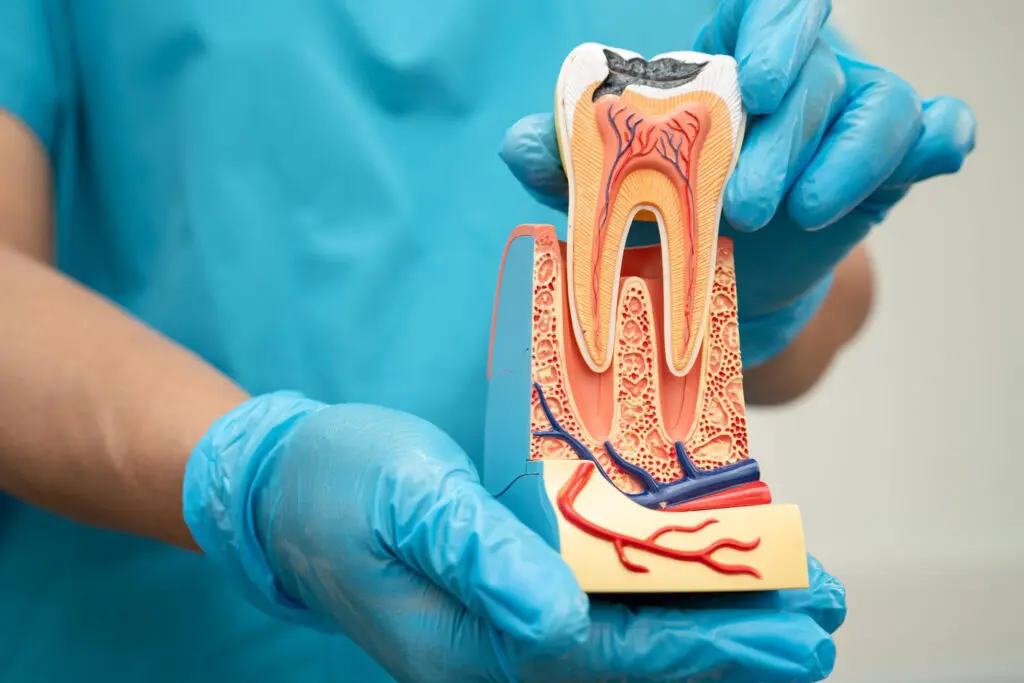Hearing the words “root canal” can make many patients feel uneasy, but the truth is that modern dentistry has made this procedure far more comfortable and efficient than most people realize. In fact, a root canal is often the treatment that relieves pain — not causes it.
Root canals are designed to save a tooth that’s infected or severely damaged, allowing you to keep your natural smile instead of resorting to an extraction. But how do you know when it’s time to see a root canal dentist? Here are five signs you should never ignore.
1. Persistent Tooth Pain
Toothaches can come and go, but if you’re experiencing severe, lingering pain — especially when biting or chewing — it could be a sign that the pulp (the soft tissue inside your tooth) is inflamed or infected.
This pain might feel sharp, throbbing, or radiate to your jaw, face, or even your ear. While pain doesn’t always mean you’ll need a root canal, it’s a major red flag that something is wrong and needs immediate attention.
2. Sensitivity That Doesn’t Go Away
It’s common to feel brief sensitivity to hot or cold drinks, but when that sensitivity lingers long after the trigger is gone, it’s time to call your dentist.
Prolonged sensitivity — particularly to heat — can indicate nerve damage or infection deep inside the tooth. A root canal can remove the infected tissue and protect the tooth from further harm.
3. Swelling or Tenderness in the Gums
If you notice swelling, tenderness, or even a small pimple-like bump on your gums near a tooth, it could be a sign of an abscess. This is your body’s way of signaling that an infection has developed at the root of your tooth.
Dental abscesses don’t heal on their own — they require professional treatment to prevent the infection from spreading. In many cases, your dentist will recommend a root canal to address the problem and save the tooth.
4. Tooth Discoloration
When a tooth turns gray or darkens in color, it’s often due to reduced blood flow from trauma or decay. This discoloration can be a sign that the tooth’s nerve is dying, which will eventually require intervention.
While there are cosmetic options to improve appearance, treating the underlying problem with a root canal ensures the tooth stays healthy and functional.
5. Pain When Pressure Is Applied
If you experience pain when eating, biting down, or even lightly touching a tooth, the nerve inside may be damaged or infected. This is especially true if the pain has worsened over time or is paired with any of the symptoms above.
A root canal dentist can determine the cause and recommend the best treatment to relieve pain and preserve the tooth.
Why Acting Quickly Matters
Delaying treatment for an infected tooth can lead to serious complications, including:
- Spread of infection to other teeth, gums, or bone
- More intense pain and swelling
- The need for extraction if the tooth becomes too damaged to save
Root canals not only stop the infection but also help you maintain your natural tooth structure — which is always better for long-term oral health.
What to Expect During a Root Canal
Many patients are surprised at how quick and comfortable a root canal can be. The process typically involves:
- Numbing the tooth to ensure you feel no pain during the procedure.
- Removing the infected pulp and cleaning the inside of the tooth.
- Filling and sealing the tooth to prevent further infection.
- Placing a crown or filling for strength and protection.
Most patients return to normal activities the same day, with only mild soreness for a short period afterward.
Final Thoughts
Tooth pain, sensitivity, swelling, or changes in tooth color should never be ignored. The sooner you see a dentist, the more likely it is that your tooth can be saved — and the easier the treatment will be.
If you’re experiencing any of these symptoms, don’t wait. Contact Gasior Family Dental today to schedule a consultation with our experienced root canal dentist and get the relief you deserve.


